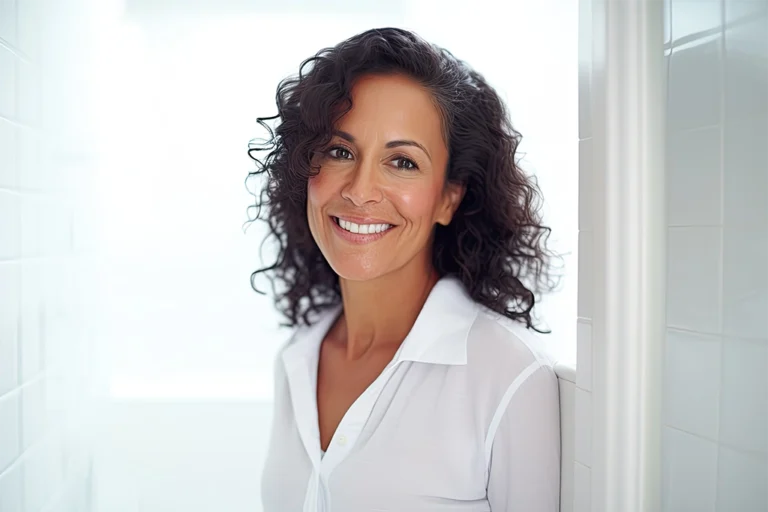3D mammograms allow doctors to take a closer, more specific look at breast tissue to identify irregularities compared to a traditional mammogram. A 3D mammogram (or digital breast tomosynthesis) is the latest technology for digital breast imaging. It scans the breast from several different angles in order to create a 3D digital image that can be studied layer by layer for signs of breast abnormalities or cancer. While 3D mammograms are not always covered by insurance, find out why they are worth the extra cost and if they are right for you.
Because 3D mammograms are a relatively new technology, doctors have not yet started recommending them over traditional 2D mammograms. However, there are several significant advantages to 3D mammograms:
- Able to detect 10-15% more cancers than 2D mammograms
- Reduce the need for additional imaging by 40%
- Have a notably smaller margin of error than that of 2D mammograms
The American College of Radiology and the Society of Breast Imaging recommend women over the age of 40 get an annual mammogram (or starting at age 35 if they have a family history of cancer).
What Is The Difference Between Traditional & 3D Mammograms?
3D mammograms are more reliable than traditional mammograms because they take closer images of breast tissue which make it more difficult to receive a false positive result. While the scan has more accurate results, they are still not able to recognize all types of cancer and can still result in a false positive. However, breast ultrasounds and MRIs are crucial to confirm the results captured by a 3D mammogram. 3D mammograms can show more accurate results because scans of 1-millimeter layers of breast tissue are layered together into a digitally recreated breast. This allows your doctor to incrementally view layers of tissue in the search for abnormalities.
The ability to view layered scans of the breast makes 3D mammograms the perfect annual screening option for women with dense breast tissue, who might have received false positive results due to overlapping tissue when receiving a traditional mammogram. Small, hidden cancers can be harder to detect in dense breast tissue without the aid of 3D mammograms. Nearly half of certified mammography facilities are being outfitted with 3D mammography equipment – they are becoming more and more routine.
Does My Insurance Cover 3D Mammograms?
Some potential drawbacks to 3D mammograms are over diagnosis and higher cost. The discovery of small, hidden cancers is a positive thing, but it is nearly impossible to know if those cancers would have actually harmed the patient. Some doctors have expressed concern about overtreatment as a result of over diagnosis, although many doctors agree that 3D mammograms are the better choice for older women. Additionally, 3D mammograms are also not always covered by insurance since they are not considered the standard procedure yet. Insurance traditionally covers the 2D mammogram, and the customer pays the difference out of pocket – usually a sum of $60.
For that sum, though, you could be saving yourself the cost of this same procedure later down the line. Getting a 3D mammogram lets your doctors take a closer look first rather than taking a 2D mammogram and having to call you back in for additional imaging if any irregularities are found.
Ask your insurance if they cover 3D mammograms today. If the extraneous fees are an issue, a 2D mammogram can provide enough information for a diagnosis. If you have insurance questions, feel free to reach out. Still unsure if 3D mammograms are a good option for you? Call or email us – we want to help alleviate your imaging concerns! For more information on 2D mammograms, look here.
What Happens During A 3D Mammogram?
Getting a 3D mammogram is almost exactly the same process as getting a 2D mammogram: a plastic plate will press down on your breast to keep it in place and spread out the tissue. You may feel uncomfortable or painful pressure from the plastic plate. If this pain becomes intolerable, please tell your radiologist. 3D mammograms usually use less pressure to keep the breast in place compared to a traditional mammogram. Several different angles are required for a 3D mammogram, but the length of time and pressure will be the same. The whole process will usually be completed within 10 minutes, with the machine taking 11 images in 7 seconds – roughly the same amount of time as a 2D mammogram. Our goal at our South Jersey Radiology offices is to get you in and out of your appointment in 30 minutes.
During a 3D mammogram, you will be exposed to slightly more radiation than you would during a traditional mammogram. This exposure is not significant and is because of the greater number of x-rays being taken of the breast. Studies show no risk has been associated with that small amount of radiation, especially with our state-of-the-art mammography equipment. Risks are minimal and far outweighed by the benefits of a detailed scan like this.
How Do I Prepare For A 3D Mammogram?
As you prepare for your mammogram, remember not to wear any deodorant, perfume, powder, creams, or lotions under your arms or on your breast area – it could interfere with your results. If you have previous mammograms, please bring them with you to your appointment. If you are scheduling your first mammogram, try to schedule your appointment the week after your menstrual period so your breasts are the least tender. Try not to consume caffeine before your appointment as this could affect your breast tenderness as well. We want to make your experience the best it can be, so please let us know if there is anything we can help you with.
Your 3D mammogram results will be sent to your doctor and ready for you in a few weeks. The turnaround time is usually equivalent to that of a 2D mammogram but can sometimes take longer because more images need to be looked through before your doctor can fully confirm your results. Getting abnormal results can be scary, but it does not mean that you have breast cancer – it just means the doctors want to take an even closer look.
The Importance of Annual Breast Cancer Screening
Annual breast cancer screenings with 3D mammograms are available and accessible for your peace of mind. South Jersey Radiology has several offices equipped with 3D mammogram facilities.
The staff at our locations are professional, compassionate, and dedicated to creating a comfortable and relaxed environment when it comes to your imaging appointment. We are committed to making your mammogram – 3D or otherwise – pleasant and prompt.
How to schedule an appointment with us
Any of our locations where 2D mammograms are also able to do 3D mammograms. With flexible scheduling, expert staff, and designed with your comfort in mind, SJRA is the perfect location for your next screening. Schedule your appointment today at any of the following locations:
- Cherry Hill Office – Cherry Hill, NJ
- Haddonfield Office – Haddonfield, NJ
- Marlton (Greentree) Office – Marlton, NJ
- Moorestown Office – Moorestown, NJ
- Turnersville Office – Turnersville, NJ
- West Deptford Office – West Deptford, NJ
- Willingboro Office – Willingboro, NJ
- Women’s Center at Cross Keys – Sewell, NJ
- Women’s Center at Medford – Medford, NJ
- Women’s Center at Mount Laurel – Mount Laurel, NJ
- Women’s Center at Voorhees – Voorhees Township, NJ
Learn more about the board-certified sub-specialized radiologists who read and interpret studies at SJRA here.
Frequently Asked Questions
Traditional mammograms capture two-dimensional images of breast tissue, while 3D mammograms use multiple angles to create a three-dimensional digital image. 3D mammograms provide a more detailed view of breast tissue, reducing the likelihood of false positive results and improving accuracy in detecting abnormalities.
Insurance coverage for 3D mammograms can vary. While traditional, annual screening 2D mammograms are covered by insurance, annual screening 3D mammograms may not be considered the standard by some health insurance providers. It is recommended to contact your insurance provider to inquire about coverage for annual screening 3D mammograms.
3D mammograms offer several advantages compared to 2D mammograms:
• Detect 10-15% more cancers than 2D mammograms.
• Reduce the need for additional imaging by 40%.
• Have a smaller margin of error.
Before your 3D mammogram, take these preparation steps:
• Avoid wearing deodorant, perfume, powder, creams, or lotions on your underarms or breast area, as they may interfere with the results.
• Bring any previous mammogram images with you to your appointment.
• Schedule your appointment for a week after your menstrual period to minimize breast tenderness.
• Avoid consuming caffeine before your appointment, as it can affect breast tenderness.
During a 3D mammogram, you will undergo a similar process to a 2D mammogram. A plastic plate will gently compress your breast to keep it in place, allowing the technologist to capture images from multiple angles. The study typically takes about 10 minutes, during which 11 images are taken in approximately 7 seconds.
Yes, a 3D mammogram involves slightly more radiation exposure than a traditional mammogram due to the greater number of X-rays taken. However, the amount of radiation is still minimal and not associated with any significant risks. The benefits of detailed and accurate imaging outweigh the minimal risks.
Yes, 3D mammograms are particularly beneficial for women with dense breast tissue. Dense breasts can make it challenging to detect small, hidden cancers with traditional mammograms. The layered scan capability of 3D mammograms helps identify abnormalities in dense breast tissue more effectively.
Typically, the turnaround time for 3D mammogram results is similar to that of 2D mammograms. However, it may take slightly longer because more images need to be reviewed and analyzed. In most cases, results are available within 24 – 48 hours.
Receiving abnormal results does not necessarily indicate breast cancer. It means that further examination is required to investigate any detected irregularities. Your doctor will provide you with more information and recommendations for additional testing or follow-up.
Annual breast cancer screenings, including 3D mammograms, are important for early detection. 3D mammograms can detect more cancers and reduce the need for additional imaging, providing a more accurate assessment of breast health. Routine screenings increase the chances of detecting breast abnormalities or cancer at an early and treatable stage.



